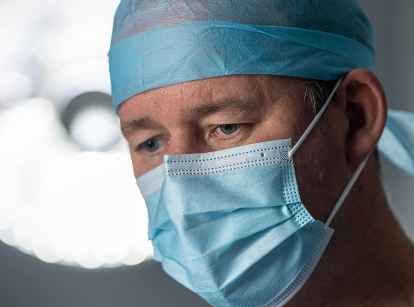Introduction
Laparoscopy is a very common procedure in gynaecology for visualising the internal gynaecological organs and also treating an array of problems.
Indications
Common conditions treated by laparoscopy include:
- Ovarian cysts.
- Endometriosis, which is the growth of endometrial tissue (the lining tissue of the uterus) outside the uterus commonly on the side walls of the pelvis, the ovaries, fallopian tubes, and the bladder and occasionally the bowel in severe cases.
- Fibroids.
- Ectopic pregnancy, which is when a pregnancy implants in the fallopian tube or rarely, on the ovary.
- Division of adhesions due to prior pelvic infection, endometriosis, or prior pelvic surgery.
- Treatment of pelvic inflammatory disease (PID) which has not responded to antibiotic treatment alone.
- Tubal ligation for sterilisation purposes.
- Removal of an ovary or fallopian tube if required.
- Total laparoscopic hysterectomy.
Procedure
Laparoscopy is performed under a general anaesthetic and is usually a day procedure (i.e. - you go home the same day).
A small incision is made at the umbilicus allowing introduction of a thin camera which allows direct vision of the internal organs. A couple of other small 4-5mm incisions will often be made on the abdomen also once the camera is inserted to pass instruments through to allow manipulation of the internal organs and any operating to be carried out.
It is normal to experience abdominal and pelvic pain for at least a week or so after the laparoscopy. Dr Friebe should be contacted if there is any severe pain, or if the patient is becoming increasingly unwell with the pain.
Risks
As with all surgery, laparoscopy carries a number of risks and potential complications, all of which are reasonably uncommon.
- Heavy bleeding during the surgery requiring blood transfusion (less than 1% risk).
- Infection after the surgery of the small wounds, or an infection in the pelvis where the surgery has taken place. This can require antibiotics, and in worst case scenarios, readmission to hospital a further laparoscopy to wash out the infection (well less than 1% risk).
- Damage to an internal organ, like the bowel, bladder, or ureter or major blood vessel during the laparoscopy. This type of injury is uncommon, and will occur about 1 in 500-2000 laparoscopies. Any damage is repaired if it is seen at the time of the surgery, and may require conversion to a larger open wound to fix the damage.
